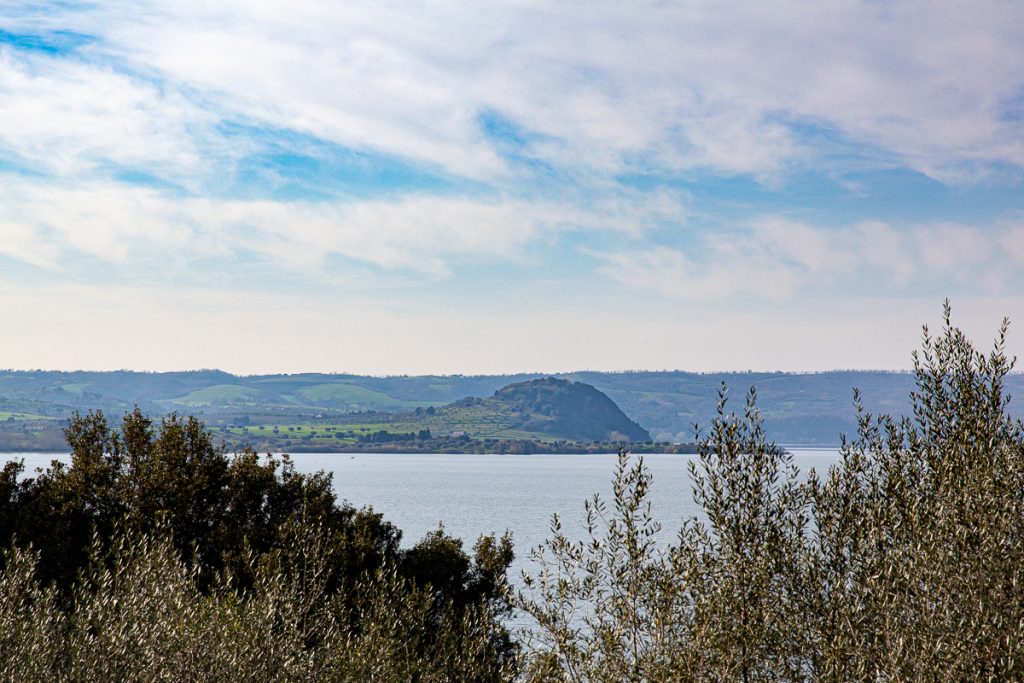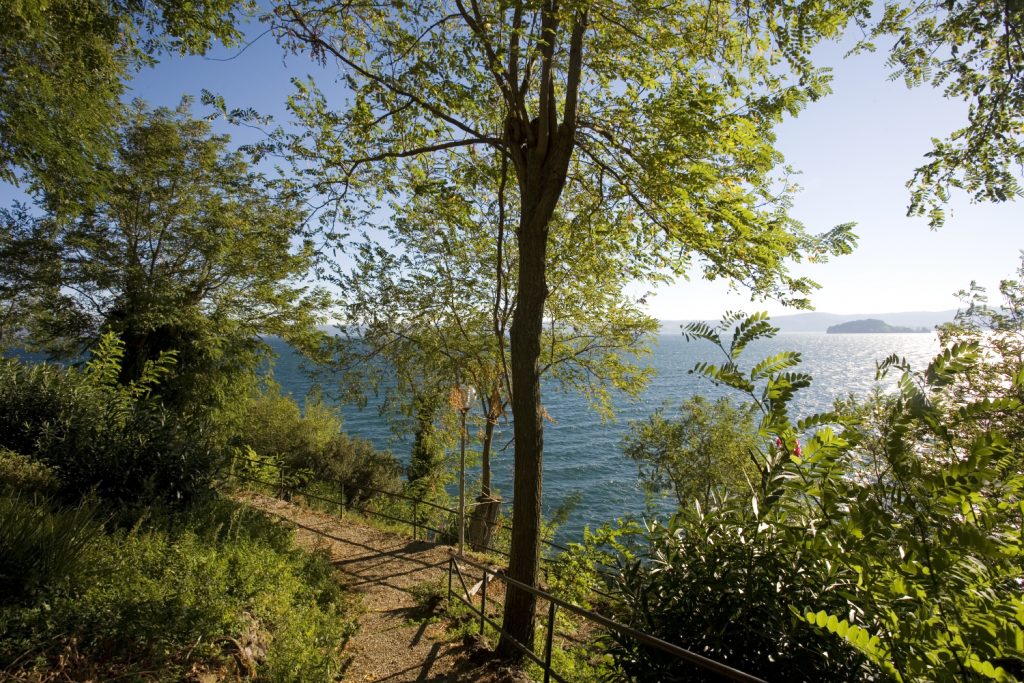- admin
- Nov, 09, 2024
- Places to visit
- Commenti disabilitati su 16. Bisenzio promontory


The Bisenzio promontory is about four kilometres west of Capodimonte, right in front of Bisentina Island, which takes its name from it, lies the ancient site that was first inhabited by the Villanovan civilization and later gave rise to the glorious Etruscan city of Vesentum. The Roman author Pliny the Elder even mentioned it among the most important cities of Southern Etruria. The city reached its peak between the 5th and 6th centuries BC, thanks to its exceptional bronze craftsmanship. The bronze figurines from Visentum were renowned throughout the Mediterranean and were used as votive offerings. During this time, the city also became a thriving trade center with the maritime and metalliferous regions of Tuscany (such as Venturina, Massa Marittima, and Populonia), trading in iron minerals from the island of Elba, which were essential for weapon manufacturing. We can only imagine the bustling activity of canoes, lashed together like barges, shuttling between the port of Bisenzio, located near Punta S. Bernardino, and the area beneath what is now S. Lorenzo Nuovo, from where land connections to the Tuscan region were established. After the arrival of the Romans, the Etruscan center, already weakened by bloody internal wars (298-280 BC), gradually lost its significance, eventually becoming the Roman municipality of Visentium. This remained active, albeit as a secondary location in the historical and economic landscape of the time, until the fall of the Empire.
From the dark centuries of the early Middle Ages, Bisenzio and its surrounding area fell prey to invasions and raids by the Lombards and Saracens, leading to significant destruction and a long period of decline.
In the 14th century, however, it experienced a more prosperous time, becoming one of the centers of what was then known as the “Val di Lago,” a strategically contested area between the municipalities of Orvieto and the Patrimony of St. Peter in Tuscia, to which it was permanently annexed in 1269. In the following centuries, the city became increasingly marginal, gradually disappearing from maps and local history, eventually relocating to what is now the Capodimonte promontory.
Today, the mountain of Bisenzio stands as a wild place where nature has reclaimed its space, featuring a dense and lush oak forest that overlooks Lake Bolsena, the Bisentina and Martana Islands, the Capodimonte promontory, and a beautiful countryside dotted with olive groves and pastures. Nearby, there is a long stretch of coastline known by many as “the farmers’ lake,” extending over 1 km westward towards Gradoli. From there, it’s easy to reach S. Magno, a gateway to the “Briganti Trail,” which provides privileged access to Alta Tuscia and its natural treasures (the Lamone and Monte Rufeno Nature Reserves), historical and archaeological sites (the necropolis of Pianezze, Vulci, Castro, and hermitages), and gastronomic delights (high-quality extra virgin olive oils, legumes, sheep cheeses, and wines like Aleatico di Gradoli and L’Est Est Est di Montefiascone). The flourishing Etruscan period of Bisenzio is still evidenced today by the numerous necropolises that were initially built near the settlement and later expanded throughout the surrounding territory. These ancient burial sites have yielded treasures of great historical and archaeological value over time. Notably, artifacts from the necropolises of Bucacce and Olmo Bello include a bronze incense burner cart dating back to the early 7th century BC, adorned with sculptural figures of warriors, animals, plowing scenes, and hunting scenes, which is now housed in the Villa Giulia Museum in Rome. A curiosity: excavations in Bisenzio have also uncovered a gold dental prosthesis. It’s worth noting the presence of a Christian catacomb from the 4th-5th century in the area, which is a testament to the high human activity throughout various eras.
The path leading to the summit of Monte Bisenzio winds through a forest of holm oaks, oaks, and chestnuts, providing shelter and glimpses of ancient remains like walls, caves, and a cistern. The most striking point is the columbarium, colloquially known as ‘PICCIONARA,’ a rock structure with niches carved into the stone and a window overlooking Lake Bolsena, offering a beautiful view of Isola Bisentina. This site, mistakenly thought to be an Etrusco-Roman tomb, was actually used for pigeon breeding. The site holds great archaeological and landscape value, tied to a long history of research and discoveries.
Unfortunately, it is not currently open to visitors due to serious safety issues.